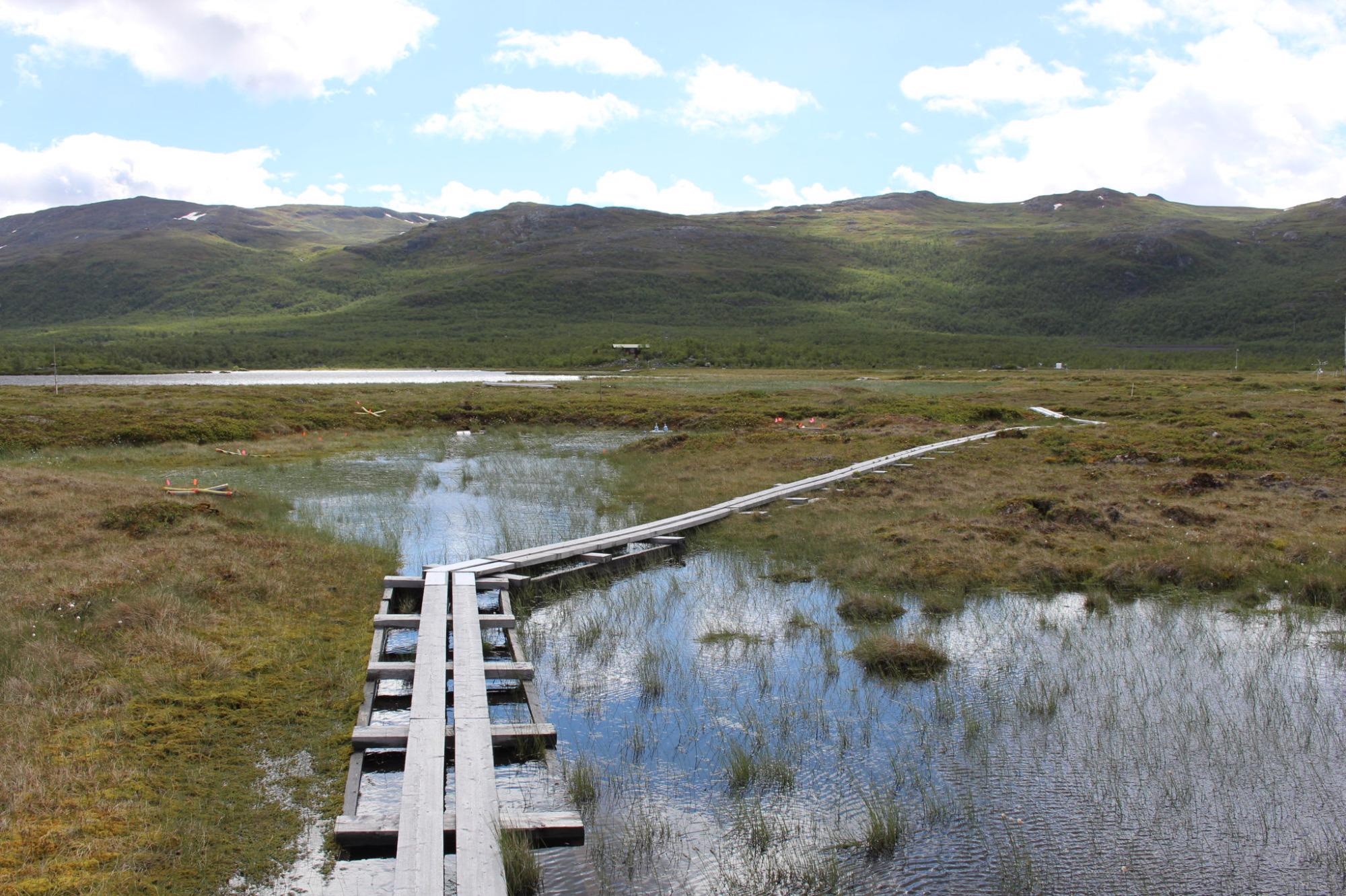Dec 11 2020
In the northern hemisphere, around one-quarter of the ground is permanently frozen. It has been estimated that these regions contain carbon that is almost twice as much as the Earth's present atmosphere.
 Permafrost areas thaw out and become marshland. Image Credit: Monique Patzner.
Permafrost areas thaw out and become marshland. Image Credit: Monique Patzner.
According to a new study, such permafrost soils are progressively thawing out as the planet becomes warmer and are emitting that carbon, which speeds up the thawing process.
An international team of researchers, including Thomas Borch, a professor in the Department of Soil and Crop Sciences at Colorado State University (CSU), and Monique Patzner, a Ph.D. student from the Center for Applied Geoscience at the University of Tübingen in Germany, studied the effects of this development on the microorganisms in the soil. The results of their study have been published in the Nature Communications journal.
Borch, who jointly advises Patzner, also holds appointments in the CSU Department of Civil and Environmental Engineering and the Department of Chemistry. Patzner was the lead author of the article. The study was headed by Andreas Kappler from the University of Tübingen and Casey Bryce from the University of Bristol in the United Kingdom.
The researchers worked on the hypothesis that the thawing process boosts the availability of organic carbon for microbes to process and consequently discharges large quantities of methane and carbon dioxide. Such gases speed up the greenhouse effect, resulting in more permafrost thawing in a kind of vicious cycle.
Warming temperatures cause the disintegration of intact permafrost soils, leading to landslides and the extensive formation of wetlands. In the new study, the researchers wanted to find out what exactly happens to the soil-trapped carbon when the permafrost thaws out.
The organic material naturally present in the samples accumulated as peat over thousands of years. With permafrost thaw, microbes become active and are able to decompose the peat. We also know that iron minerals preserve organic carbon from biodegradation in various environments—and thus they could be a carbon sink even after the permafrost has thawed.
Andreas Kappler, University of Tübingen
The reactive iron exists as a kind of rust and is likely to capture the organic material in the so-called 'rusty carbon sink.'
Investigations in Sweden
The storage potential of the rusty carbon sink was investigated by the researchers. This carbon sink is located at a permafrost peatland at Stordalen mire, Abisko, Sweden. From this site, the team collected samples of the soil porewater and also the drill cores of the active layer along a permafrost thaw gradient.
They subsequently examined the amount of organic material that was attached to reactive iron minerals, the degree of stability between these iron-carbon associations and the permafrost thaw, and whether the existing microbes could utilize the material as a source of energy and food. The researchers also performed experiments in the laboratory of the University of Tübingen.
Using synchrotron-based radiation at the Stanford Synchrotron Radiation Lightsource, Borch’s group handled the characterization of the iron mineralogy along the permafrost thaw gradient. They noticed a loss of poorly crystalline iron and a reduction in organic matter-chelated iron, but also observed an increase in iron sulfurs and iron-bearing clays along the thaw gradient.
“This clearly indicated that important iron phases were dissolving due to permafrost thaw-induced anaerobic conditions,” stated Borch.
The researchers also observed that microbes can apparently use the iron as a food source, thus discharging the bound organic carbon into the water in the soil.
That means the rusty carbon sink cannot prevent the organic carbon from escaping from the thawing permafrost.
Andreas Kappler, University of Tübingen
“Based on data available from elsewhere in the northern hemisphere, we expect that our findings are applicable for permafrost environments worldwide,” Bryce added.
Patzner elaborated that the rusty carbon sink is lost during permafrost thaw and is only detected in intact permafrost soils. The team is now looking for ways to find out how exactly this eases greenhouse gas emissions and, therefore, global warming.
It appears that the previously iron-bound carbon is highly bioavailable and, therefore, bacteria could immediately metabolize it into greenhouse gas emissions. This is a process which is currently absent from climate-change prediction models and must be factored in.
Monique Patzner, PhD Student, Center for Applied Geoscience, University of Tübingen
Currently, the Borch laboratory is using Fourier transform ion cyclotron resonance mass spectrometry installed at the National High Magnetic Field Laboratory to explain the fate and chemical nature of the organic matter discharged. Such kinds of additional inquiries should give a deeper insight into carbon cycling in these susceptible ecosystems, concluded Borch.
Journal Reference:
Patzner, M. S., et al. (2020) Iron mineral dissolution releases iron and associated organic carbon during permafrost thaw. Nature Communications. doi.org/10.1038/s41467-020-20102-6.